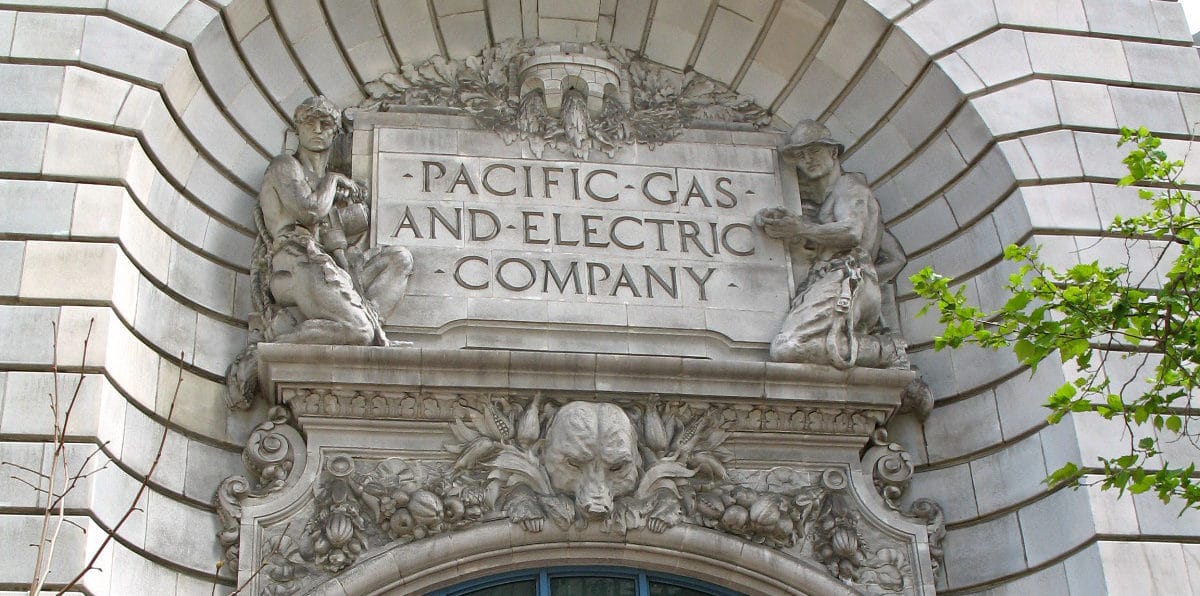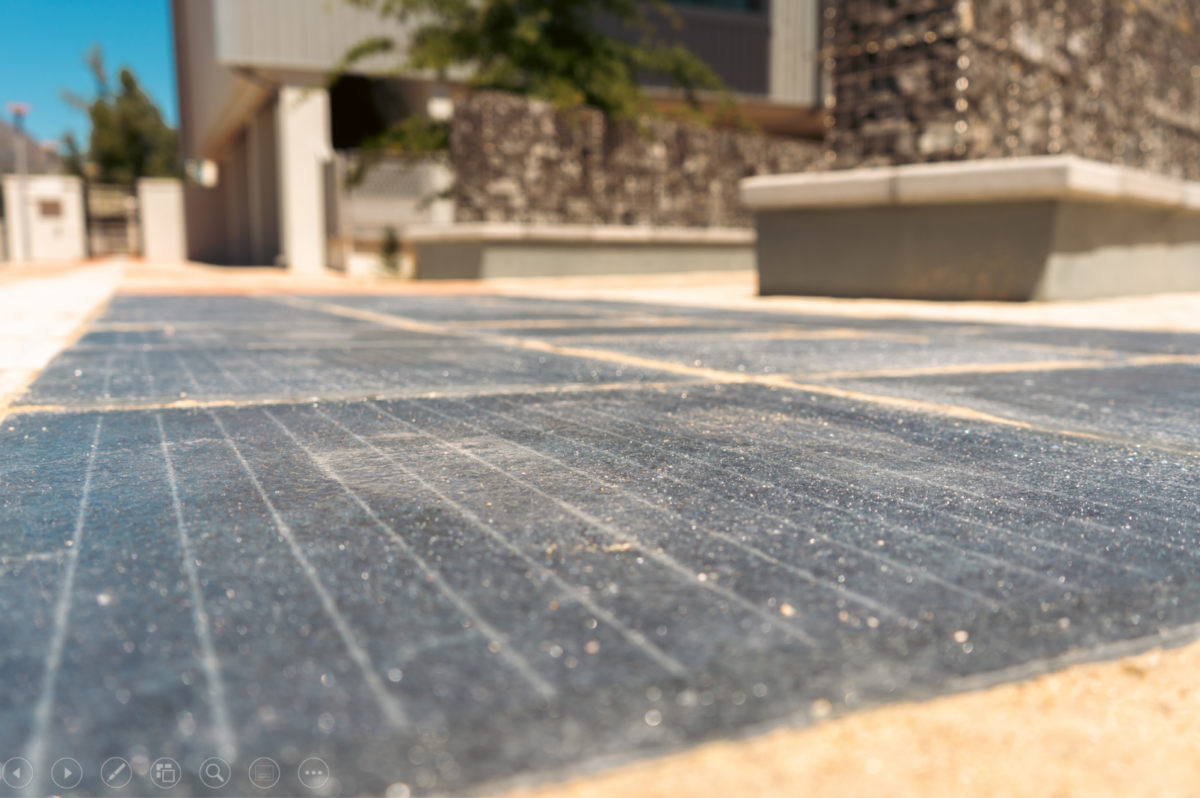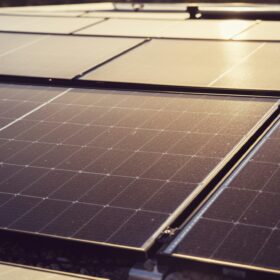A U.S. Bankruptcy Judge has started the clock, giving California officials until August 7 to sort out the wave of proposals to seize control of Pacific Gas & Electric and pull the utility out of a bankruptcy. PG&E first filed for bankruptcy in January in response to the $30 billion in liabilities the utility was set to owe victims of wildfires the company’s equipment may have ignited in 2017 and 2018.
While PG&E has until Sept. 26 to submit its own debt payoff and financial reconstruction plan, multiple parties, including insurance companies and a group of PG&E bondholders, are developing proposals of their own.
In the meantime, the utility is operating under the status quo for the time being. In fact, last week operators of the 550 MW Topaz Solar facility in San Luis Obispo County, California announced that they had received full contract payment for its June 2019 energy deliveries to PG&E.
Furthermore, the utility has continued to operate its Self Generation Incentive Program, paying owners of energy storage systems out of accounts specifically created for the program and funded by ratepayers.
The reason for the seemingly-rushed decision to have the third-party proposals accounted for and reviewed so quickly is to settle the bankruptcy case as quickly as possible, with the ultimate target of June 2020. The reason for that specific target is because June is when participation begins for a $21 billion wildfire insurance fund.
PG&E has already requested some $5.5 billion in debtor-in-possession financing, and that number is just to maintain operations during the Chapter 11 process. In terms of future ownership, the current proposal making waves is the one initiated by the aforementioned group of insurance companies. These companies are owed more than $20 billion.
The insurance companies plan to turn these unaddressed claims into new stock. This new pool of stock would then give the companies a sizeable share of the PG&E’s stock holdings, allowing for the creation of a trust for wildfire victims.
The most interesting proposition thus far has come from the city of San Francisco. The city is looking into purchasing the power lines previously owned by PG&E in the pursuit of creating a municipal utility. Under the San Francisco proposal, the city would buy up the distribution system assets in addition to generation assets. The city claims that doing so will ensure supplies remain affordable, reliable and in compliance with climate goals.
The saga of PG&E is the energy world’s best ongoing melodrama, one that has the potential to entirely rewrite the definition of public power as we know it.
This content is protected by copyright and may not be reused. If you want to cooperate with us and would like to reuse some of our content, please contact: editors@pv-magazine.com.









Such a disaster. New businesses will shy away from California and be heading to Florida. Shades of the Enron saga, only this time it is not a corporation that does in the California rate payers, but rather the California legislature itself .
OH, No DB, Duke Energy and now the Southern Company are either owners of or are buying into the California energy market. Both Duke and the Southern Company are positioning themselves to carve out an area of ratepayers for their own micro-grids with energy storage. One of the many proposals for PG&E is to break it up into CCAs and let smaller local micro-grids with storage handle the needs of the communities PG&E now serves on an irregular basis.
DB Cooper is absolutely the correct.
The truth about the Camp fire:
Those who lost their homes will be required to reimburse their insurance carriers with any settlement $ received.
The only ones who stand to profit are the insurance companies and the greedy fire lawyers who are likely not telling their clients about this.
Shareholders and employees have already gotten the shaft $48 to $18/share and have done no wrong.
Here is a little local history on the Camp Fire:
In 2010 PCG applied to CPUC to rebuild the 100 year old Caribou Palermo 115kv line.
The state agency denied that request citing the line as a historical landmark.
https://www.cpuc.ca.gov/environment/info/ene/Palermo/final_mndis/10_background.pdf
In 2013 6 towers on that line, in the Pulga area, blew down in strong winds (nature no fire).
PCG applied to CPUC again to rebuild those 6 towers to new construction standards. That request was also denied by CPUC and PCG was forced to erect the towers to the same historical standards.
https://www.pge.com/nots/rates/tariffs/tm2/pdf/ELEC_4256-E.pdf
PCG has hired an independent engineering firm to develop and present a comprehensive report on the transmission lines history.
This same govt incorrectly applies Inverse condemnation which disincentives ca utilities from maintaining compliance.
Why invest in compliance if you are punished for doing so?
These same state leaders have been forcing logging and intelligent forest management out of the state for 40 or 50 years.
Who really is responsible for the Camp fire? The state of ca and the liberal tree huggers who now get mostly burnt trees to hug while the Utilities get the shaft.
Newsom is posturing for a future presidential run by trying to undue the damage caused by his own political party.
They might as well be legislating in literal darkness to accompany their mental and moral darkness.
Hey Craig S. … so, pretending for a moment that what you said was true (about reimbursing the insurance companies with our settlement monies), that would then imply that the insurance companies would have to reimburse the homeowner their insurance premiums! Moving past this, our “greedy” fire lawyer has already stated the obvious, in that we can’t sue PG&E for money already (or expected to be) received from insurance settlements. We can only sue for items that were not covered (or inadequately), and for non-materialistic things such as loss of income, hardships, PTSD treatment (not covered by health insurance), and so forth. Not sure where you got this information from.
Hi Tony,
It might be a good idea to thoroughly read the insurance policy small print. Only in the end will you find out if your lawyer is greedy or not, unfortunately most are. My family and I barely escaped the Southern ca Scout fire in 1994.
That fire was also government caused yet blamed on some previously busted drug cookers allowed to be free only to operate a meth sting lab.
The case was thrown out of court 4 years later and only the lawyers profited.
There was no profitable investor owned utility to blame for that one so the county just prosecuted the saps that they had operating the lab.
Sorry about your losses, been there, yet We were insured.
I have learned the hard way to distrust most lawyers and the governments which consist of mostly lawyers. As far as the Camp fire I believe that “truth is a force of nature”.
Good Luck to You
Classification: Public
For example, in a 2017 ratemaking proceeding, the CPUC stated,
“While the CPUC recognizes that repair and replacement are necessary components of a utility’s operation, the amount that PG&E has been spending on what appears primarily to be replacement of transmission facilities is staggering and potentially unjustified.”
(Ex. A, Initial Br. of the CPUC,
Pacific Gas and Electric Co., Dkt. No. ER16-2320-002 (Mar. 15, 2018) at 8.)
The CPUC also stated
there was reason to believe that PG&E was “‘gold plating’ the system” and “unreasonably burden[ing] ratepayers with unnecessary costs.” (Id. at 2-3.)
This ratemaking process has resulted in settlements at amounts less than what PG&E initially requested. Going forward, PG&E hopes to work with all relevant stakeholders to re-calibrate the level of investment in transmission asset replacement that will be supported in light of the unprecedented wildfire risk California is now facing.
I get all the stuff that needs to be dealt with PG&E.
I just want to know when are they going to give me the a new home that was destroyed with all my precious memories and belongings. ?
An emotional loss my husband and I are still going through.?